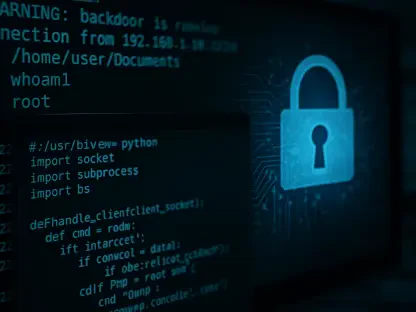Hospitals stand as critical pillars of community health, offering solace and healing in times of need, yet they grapple with profound security challenges that jeopardize the well-being of patients, staff, and visitors alike, with threats ranging from violent confrontations to unauthorized intrusions. The spectrum of dangers is vast, often sparked by emotional distress or targeting valuable medical resources. Data from the Bureau of Labor Statistics reveals a sobering reality: healthcare workers face up to five times the risk of workplace injury compared to other professions. This alarming statistic, paired with the staggering $18.27 billion cost of violence in U.S. hospitals in 2023, paints a clear picture of the urgent need for fortified security measures. Beyond merely reacting to incidents, a proactive stance is essential to create environments where medical professionals can focus on care without the shadow of fear. This article delves into actionable strategies to strengthen hospital security, addressing the unique vulnerabilities of these settings and highlighting the integration of technology, training, and compliance to safeguard all who enter these vital spaces.
Understanding the Urgency of Hospital Safety
The importance of robust security systems in hospitals cannot be overstated, as they form the bedrock of protection against a myriad of threats, from physical altercations to breaches of sensitive data. These systems are crucial for ensuring that healthcare providers can carry out their life-saving work without the constant threat of harm looming overhead. A secure environment also builds trust among patients and visitors, reinforcing the notion that hospitals are sanctuaries of care. The emotional weight of medical emergencies often amplifies tensions, making safety measures not just a precaution but a fundamental necessity. Without them, the risk of disruption to patient care escalates, potentially compromising outcomes in critical situations.
Moreover, the financial implications of inadequate security are staggering, with billions spent annually on recovery from violent incidents. Proactive investments in safety infrastructure can significantly curb these expenses, preventing lawsuits, reducing staff turnover, and protecting institutional reputation. Hospitals that prioritize security demonstrate a commitment to their core mission, ensuring that resources are directed toward healing rather than managing crises after the fact. This approach aligns with broader goals of operational efficiency and community trust, making security a strategic priority for administrators navigating tight budgets and competing demands.
Identifying Key Vulnerabilities in Healthcare Settings
Hospitals present a unique set of security challenges due to their inherently public nature and the high-stress environment they foster. As spaces where life-and-death decisions unfold, they often become arenas for volatile emotions from patients and families, which can erupt into unpredictable behavior. The sprawling layouts of many medical campuses, with multiple entry points and hidden corners, further complicate efforts to maintain comprehensive oversight. These factors combine to create an atmosphere where security breaches are not just possible but increasingly likely, demanding tailored solutions to address specific risks without hindering the facility’s accessibility.
Compounding these issues is the presence of vulnerable populations and valuable assets, such as controlled substances stored in pharmacies, which attract theft and misuse. Reports indicate that 91% of emergency physicians have either faced or know of workplace violence, a statistic that underscores the real danger within hospital walls. The open-door policy that defines healthcare facilities, while essential for community access, often leaves them exposed to unauthorized entry. Addressing these vulnerabilities requires a nuanced balance between maintaining an inviting atmosphere and implementing stringent controls to deter potential threats, ensuring that safety remains paramount.
Building a Multi-Layered Security Framework
Effective hospital security hinges on a multi-layered approach that integrates various components into a cohesive protective strategy. Access control systems, adopted by approximately 92% of hospitals, play a pivotal role by restricting entry to sensitive areas like intensive care units and pharmacies through technologies such as key cards and biometric scans. These systems extend their reach to digital security, safeguarding patient data in compliance with stringent privacy laws. Meanwhile, advanced video surveillance, bolstered by high-definition cameras and cloud storage capabilities, serves as both a deterrent to potential wrongdoers and a critical tool for post-incident investigations, ensuring accountability and transparency.
Beyond technology, the human element remains indispensable, with trained security personnel acting as the frontline defense. These officers patrol premises, monitor surveillance feeds, and respond swiftly to emergencies, equipped with skills in de-escalation and crisis management. Alarm systems, whether auditory or silent, provide immediate alerts to threats like intrusions or fires, while emergency notification systems facilitate rapid communication across multiple channels during crises, often triggering automated responses such as door lockdowns. Customizing these elements to suit the unique needs of different hospital departments ensures a tailored defense mechanism that addresses specific risks, creating a seamless shield against diverse threats.
Harnessing Technology for Proactive Threat Detection
The integration of cutting-edge technology marks a transformative shift in how hospitals approach security, with artificial intelligence (AI) emerging as a game-changer in threat detection. AI-powered surveillance systems continuously analyze footage to identify potential dangers, such as firearms, in real-time, significantly reducing the burden on human monitors who may be prone to fatigue or distraction. This capability proves especially vital in expansive hospital campuses where constant oversight of numerous feeds is a logistical challenge. By enabling swift identification and response, AI enhances the ability to intervene before situations escalate, potentially saving lives in high-stakes scenarios.
Scalability is another advantage of AI-driven solutions, as they can be seamlessly integrated into existing camera infrastructure, offering a cost-effective upgrade to traditional systems. This adaptability ensures that hospitals of varying sizes and budgets can benefit from advanced security measures without overhauling their current setups. However, technology must complement rather than replace human judgment, ensuring that automated alerts are verified and acted upon by trained staff. The adoption of such innovations reflects a forward-thinking approach to safety, positioning hospitals to stay ahead of evolving threats while maintaining a focus on patient care and operational continuity.
Balancing Security with Privacy Compliance
While bolstering security is a top priority, it must not infringe upon the privacy rights of patients and staff, a balance governed by strict legal frameworks like the HIPAA Security Rule. This regulation mandates robust protections for electronic health information, a standard met through access control systems that limit data access to authorized personnel only. Additionally, state-specific laws often require visible signage for surveillance activities and encryption of recorded footage to prevent unauthorized viewing. These measures ensure that safety enhancements align with ethical obligations, preserving trust in healthcare environments.
Strategic placement of cameras is another critical consideration, avoiding areas where privacy is paramount, such as patient rooms, unless absolutely necessary for security reasons. Access to recordings must be tightly controlled, with regular audits conducted to detect and address any vulnerabilities in the system. Such diligence prevents potential misuse of sensitive information and reinforces compliance with legal standards. Hospitals that navigate this delicate balance effectively demonstrate a commitment to both safety and confidentiality, ensuring that protective measures enhance rather than undermine the integrity of patient care.
Overcoming Financial Barriers to Security Investments
The financial demands of implementing and maintaining comprehensive security systems pose a significant hurdle for many hospitals, with costs encompassing technology acquisition, ongoing maintenance, and staff training. Yet, the disparity between the $3.62 billion spent on prevention and the $14.65 billion allocated to post-incident recovery in 2023 highlights a compelling case for upfront investment. Proactive measures can drastically reduce the long-term financial burden of violence, including legal fees and compensation claims, while safeguarding human lives and institutional stability.
For non-profit hospitals, external funding opportunities offer a viable path forward, with programs like FEMA’s Nonprofit Security Grant Program providing essential resources to enhance safety infrastructure. National initiatives, such as the Hospital Preparedness Program, also deliver guidance and support to align security efforts with broader preparedness goals. By leveraging these avenues, hospitals can prioritize safety despite budget constraints, viewing such expenditures as strategic investments rather than mere costs. This mindset shift underscores the value of prevention, ensuring that limited resources are directed toward averting crises rather than merely reacting to them.
Cultivating a Security-Conscious Culture Through Training
Training stands as a cornerstone of effective hospital security, equipping both security personnel and medical staff with the tools to prevent and manage potential threats. Security officers require rigorous preparation in areas like emergency response, conflict de-escalation, and coordination with healthcare teams to ensure a unified approach during crises. Regular drills simulate real-world scenarios, fostering readiness and confidence in handling high-pressure situations. This structured preparation is vital for maintaining order and minimizing harm when incidents occur, reinforcing the hospital’s commitment to safety.
Equally critical is the broader cultural shift toward embedding security into the daily ethos of hospital operations. Encouraging staff at all levels to report suspicious activities or concerns fosters a proactive mindset, while training in conflict resolution empowers employees to defuse tensions before they escalate. Clear, accessible protocols ensure that everyone understands their role in maintaining a secure environment, aligning individual actions with institutional goals. By prioritizing such education and awareness, hospitals create a collective responsibility for safety, ensuring that the focus remains on delivering exceptional care without the distraction of preventable risks.
Reflecting on Past Progress and Future Steps
Looking back, the journey to enhance hospital security revealed a landscape marked by escalating violence and unique challenges that demanded urgent action. The integration of multi-layered systems, from access control to AI-driven surveillance, addressed critical vulnerabilities with measurable impact. Training initiatives and compliance with privacy laws like HIPAA ensured that safety measures respected ethical boundaries, while financial strategies mitigated the burden of investment. High-profile incidents of the past served as stark reminders of the consequences of inaction, driving a collective resolve to prioritize prevention over reaction.
Moving forward, hospitals must continue to adapt by embracing emerging technologies and refining training programs to counter evolving threats. Exploring additional funding avenues and fostering partnerships with security experts can further bolster capabilities. A sustained commitment to a culture of safety, where every staff member plays a role, will solidify these efforts. By building on past lessons, the healthcare sector can forge a future where security and care coexist seamlessly, ensuring that healing spaces remain sanctuaries for all who seek them.









